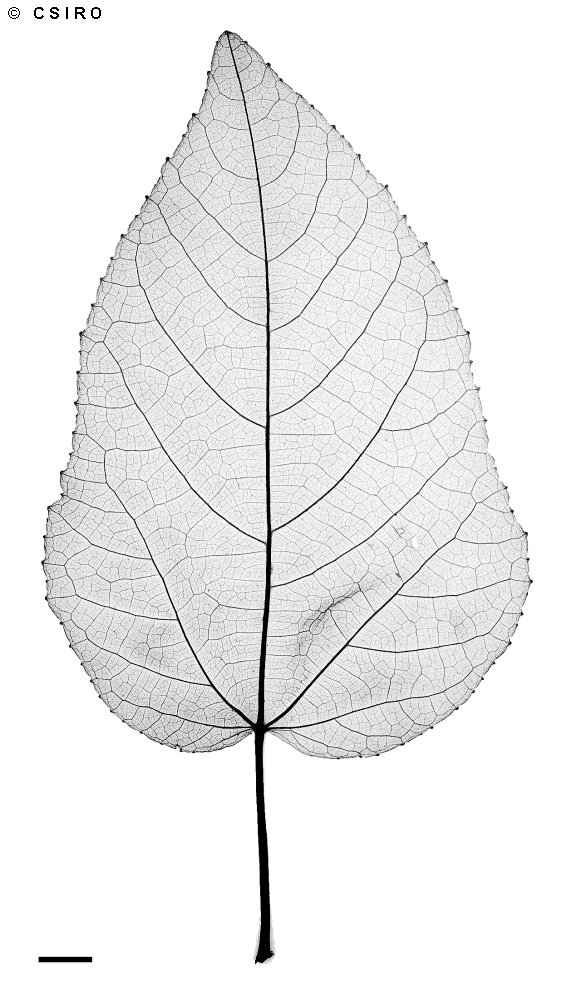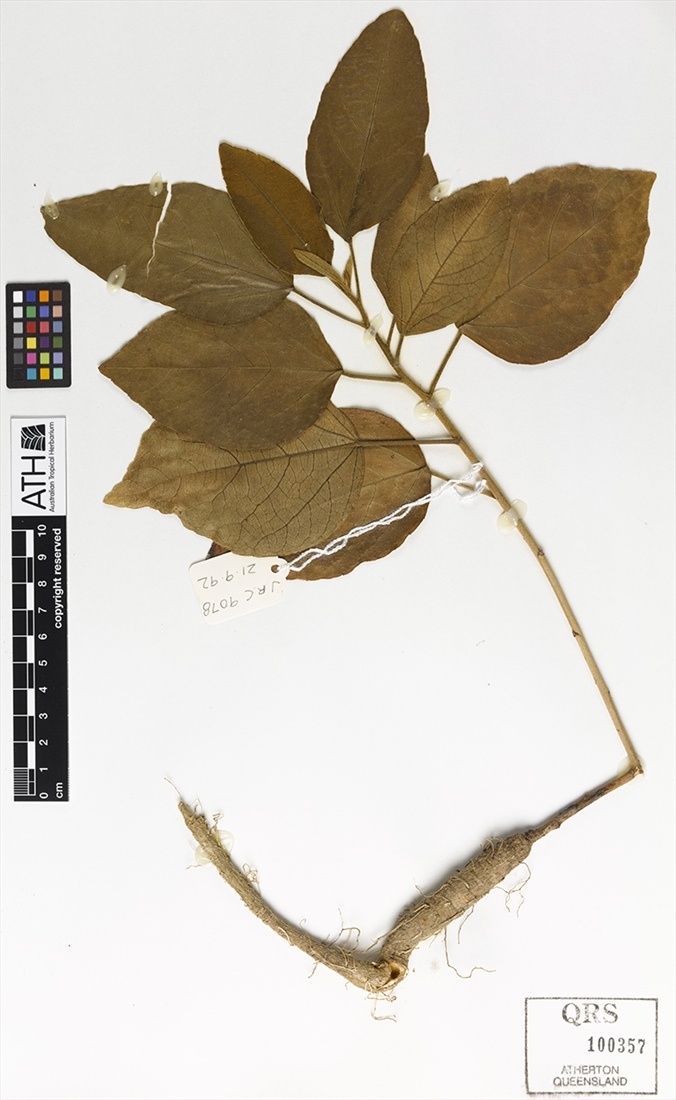Australian Tropical Rainforest Plants - Online edition
Hibiscus sankowskyorum Craven




Craven, L.A., Barrett, R.L. & Barrett, M.D. (2016) Muelleria 35: 6-9. Type: "QUEENSLAND. Cook District: Brown Creek crossing on the road to Iron Range, on levee of the stream in Eucalyptus tetrodonta–E. nesophila woodland, 9.viii.1987, J.R. Clarkson 7341."
Flowers and fruits as a shrub about 1-3 m tall.
Leaf blades about 9-14 x 4.5-8.5 cm. petioles about 2-4 cm long. Stipules filiform, about 5-6 mm long. Both the upper and lower surfaces of the leaf blade, petioles and twigs clothed in stellate hairs. About five veins radiate from the base of the leaf blade. Twig bark strong and fibrous when stripped.
Flowers about 12 mm diam. Pedicels about 8-10 mm long. Epicalyx segments about ten, linear, each about 15-18 mm long. Calyx about 20-25 mm long, outer surface clothed in stellate hairs. Petals about 6-7 cm long. Corolla with a wine red centre. Staminal column about 30 mm long. Ovary clothed in long hairs.
Cotyledons suborbicular, hairy, about 10-16 x 11-17 mm, petioles variable, sometimes longer than the cotyledons. First pair of leaves with toothed margins, leaf blades about 15-16 x 11-13 mm, petioles slightly shorter than the leaf blades, usually about 10-14 mm long. At the tenth leaf stage: both the upper and lower surfaces of the leaf blade, petiole and stem clothed in stellate hairs. Stipules linear, about 5-8 mm long, hairy. Tap root cream, swollen, carrot-like (Daucus carota). Seed germination time 14 to 100 days.
Occurs in CYP and NEQ. Altitudinal range from near sea level to 300 m? Usually grows in open eucalypt forest but sometimes found on the margins of monsoon forest and vine thickets.
This large flowered shrub has potential for tropical gardens but is probably short lived.





